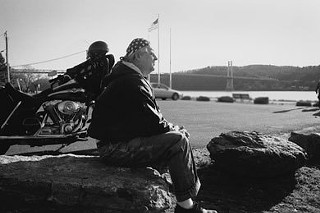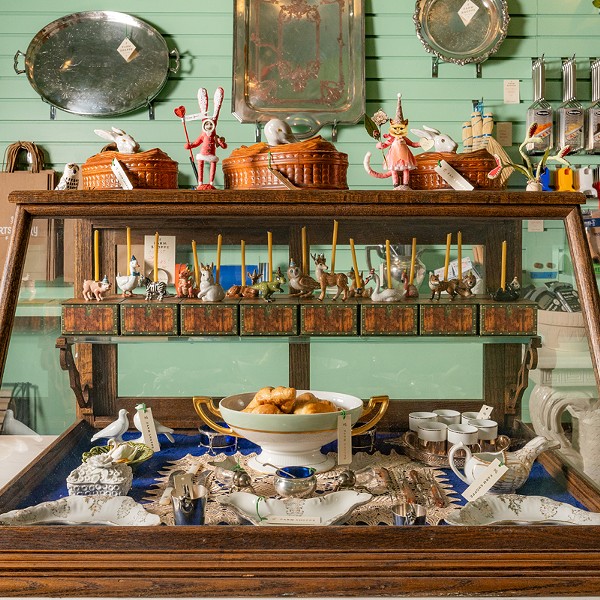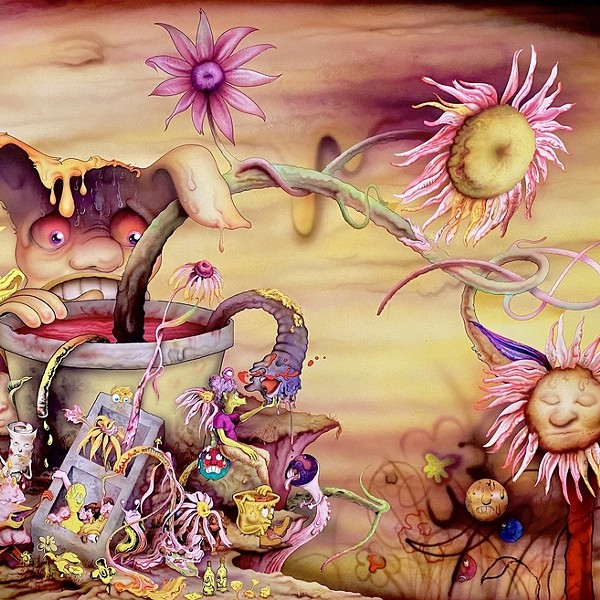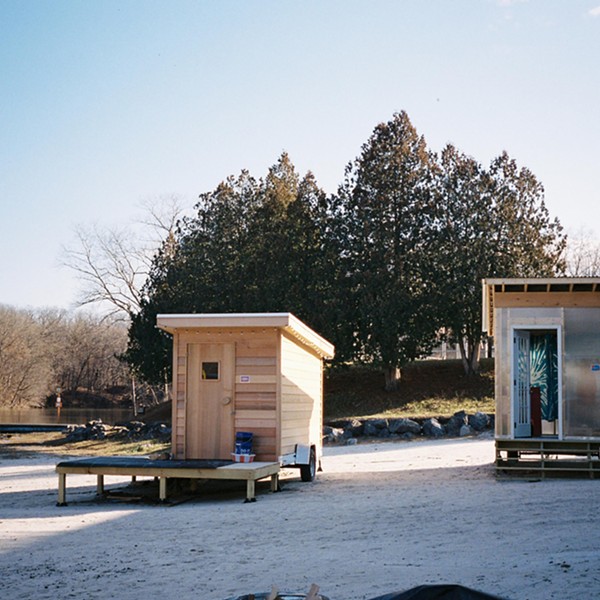As the Hudson Valley enjoys a wave of economic resurgence and a revitalization of neglected communities, a fleet of vigilant and skilled advocates for the environment are hard at work.
Adiversity of grassroots organizations, businesses, and governmental agencies are helping humanity mind its manners as our influence spreads and intensifies. They are busy protecting natural places and open spaces, midwifing environmentally wise development, converting polarized factions into productive collaborators, devising regional planning, mitigating environmental disasters and preventing new ones, educating citizens, and—equally important—keeping us hopeful that we can thrive in the region without destroying it.
The following briefly highlights some of what’s being done to keep our region clean and green. A take-home message: It’s up to each of us to get involved and help create the vision we want. More than ever, there is an opening for collaborative design in how the region grows and flourishes. As you review the examples below, see where your interests, talents, and creativity might contribute to the ultimate environmental organization: everyday citizens.
Booting out the Big Ones
There is no getting around the fact that humans are going to impact the natural landscape of the Hudson Valley. While room to grow is essential (unless we close the gates behind us, now that we’ve all been let in), we’ll need to decide what kind of growth is acceptable. A loud “no” is being voiced about two large projects in the region, the Belleayre Resort at Catskill Park and a luxury housing development at Awosting Reserve along the Shawangunk Ridge, because of the magnitude of damage to watersheds, viewsheds, and ecosystems they would impose. These have been reported on extensively in the press and likely will continue to be for some years, because that’s how long it will take for the permit processes and legal hurdles to be cleared by developers—if that ever happens.
Then there’s the St. Lawrence Cement plant proposed for Greenport/Hudson. Not a development project but an industrial one, the plant would be an enormous new “industrial city” with a 40-story smokestack emitting arsenic, lead, mercury, dioxins, and microscopic particles associated with lung damage; a 1,200-acre mine; 2 miles of conveyor belts; and a large dock facility on the Hudson River beside a public park. Ned Sullivan, President of Scenic Hudson calls it “the biggest threat to the environmental health of the Hudson Valley.”
“They need 17 permits and approvals and still have none,” says Susan Falzon, Deputy Director of the group Friends of Hudson, which has grown from a small group of citizens that prevented a dry cleaning chemical processing facility from settling on Hudson’s waterfront in 1999, to almost 4,000 members today. “We live here, this is our community, and we are committed to having a say about the quality of life here,” says Falzon. “We have tremendous support from our membership. We keep open and consistent communication with them, as well as with decision makers, regulators, and politicians. And we’ve focused on two things: the permitting process, and public attention.”
That’s something other groups could replicate. “You need to contact permitting agencies to understand the process. It’s up to people to figure out how and in what aspects they can become involved. And it’s very important to get involved early on.” Friends of Hudson did so by retaining its own attorney and engineers to review the legal and technical aspects of St. Lawrence Cement’s application, and then intervened in the permitting process.
As for public attention, they’re very creative at getting it. It’s hard to miss the “Stop the Plant” message on signs, bumper stickers, flyers, in papers, at rallies, fundraisers, concerts, speeches, seminars, in the news, on the Internet, and recently, in an impressive 16-page supplement in a local newspaper. Plus, Executive Director Sam Pratt, President Peter Jung, and other members carry the message personally, no matter what size the gathering—that’s how contributions first started coming in. Now, about half of their funding comes from individual donors and small foundations, and half from grants they’ve written. “It takes a lot of effort and money, and you’ve got to take it seriously,” Falzon summarizes, and she invites other grassroots groups to contact Friends of Hudson for help in getting organized and being effective.
Cleaner Greener Development
While huge projects rightfully get a lot of attention, numerous smaller ones throughout the region have the potential to do extensive piecemeal environmental damage, especially along the river. For example, Scenic Hudson blocked through court action the construction of six 37-story high-rises on Yonkers’ waterfront, then helped create a public esplanade, sculpture garden, amphitheater, and environmental education center in their place. The organization has also had a huge role in the Beacon waterfront revitalization design. “What we’re doing is wrapping the city in green space and providing cutting-edge sustainable development,” says President Ned Sullivan. “We’ve created a preserve on Mt. Beacon, a beautiful park that runs through the city along Fishkill Creek, and assembled 25 acres of waterfront to be the site of a state-of-the-art hotel and restaurant complex that will meet the highest environmental standards of any in the country.”
Riverkeeper is also bringing its sizeable environmental clout and expertise in pollution and river protection to development plans like the Southern Waterfront Development Project in Poughkeepsie. In a review of the plans, it concluded that “the City’s proposal to transform a polluted stretch of its waterfront with a hotel, restaurants, office buildings, a public walkway, and other development could provide substantial environmental and community benefits.” But the city had side-stepped drawing up an environmental impact statement, which Riverkeeper then enforced. It’s still not good enough, though, and Riverkeeper is recommending several better pollution prevention, land use, and design strategies that would set industry precedent for environmentally sound principles.
Sharing the Smarts
Environmental education is a key component to protecting the region’s environment. Hudson River Sloop Clearwater has been teaching environmental stewardship all along the Hudson for decades. It’s especially beloved by school groups—and who wouldn’t be attracted to a classroom that’s a sailing vessel, and to the hands-on (and hands-in) field trips to the river’s edge that Clearwater sponsors? Clearwater also creates the hugely entertaining and educational Clearwater Festival each summer, and has a strong environmental advocacy and action role. One example: helping create Friends of a Clean Hudson, a coalition of national, state, and regional environmental groups that advocated for the removal of PCBs from the Hudson River. Clearwater is now helping design the remedial phase of the PCB cleanup.
Another superb educational resource is Environmental Advocates of New York. For 35 years they’ve been a wellspring of conferences and programs to upgrade the citizenry’s environmental savvy. Their Web site is a great resource, and it also highlights another primary function: action. They’ve helped create the state’s Bottle Bill, the nation’s first acid rain law, the State Environmental Quality Review Act (SEQRA), the Environmental Protection Fund, the Hudson River Estuary Management Act, the Clean Indoor Air Act, the low emission vehicle program, the 1996 Clean Water/Clean Air Bond Act, and more.
The state’s Energy Research and Development Authority (NYSERDA) has been a leader in bringing alternative energy concepts into practical use. In addition to providing educational resources, materials, and incentives to everyday citizens and to businesses, the program helps building designers make new and rehabilitated commercial, industrial, and institutional buildings more environmentally responsible and economically viable.
Locally, the Hudson Valley Sustainable Communities Network (HVSCN) has been providing education and training in environmentally healthier building practices, energy sources, and business strategies since 1996. Acting Director Melissa Everett reports that this year’s pollution prevention education will include salons on green building and renewable energy, and tours of homes and buildings in the region that showcase green design and energy usage. Trainings are being planned to help businesses reduce their use of toxics by “green chemistry”—replacing harmful ingredients in materials and products with environmentally safer ones.
Supporting a Regional Vision
A regional, integrated, environmental protection commitment is something the Hudson Valley is beginning to see. Governor Pataki and New York State agencies have created several programs to enhance economic and environmental richness together.
One is the Hudson River Valley Greenway program, created by a legislative Act in 1991 that birthed the Greenway Communities Council. The Council offers technical and financial assistance to communities that agree to certain principles of combining economic development with preservation of scenic, natural, historic, cultural, and recreational resources. Hyde Park, Athens, Lloyd, and La Grange are among those receiving grants through the program for planning or development projects. In addition, six counties (Dutchess, Westchester, Putnam, Rockland, Orange, Albany) are developing countywide compacts to serve as umbrellas to guide local development.
The DEC-administered Hudson River Estuary Program was created in 1996 to conserve natural resources, clean up pollution, and promote public use of the river and surrounding lands. The program’s five year Report Card from 2001 described an impressive list of accomplishments: over $173 million was invested in nearly 200 individual projects and initiatives to revitalize waterfronts, control and remediate pollution, preserve open space, fund the state’s Environmental Protection Fund (EPF), and much more.
The New York State Environmental Assistance Network (NYSEAN) is a cooperative effort of agencies and nonprofit organizations whose mission is to provide cost-effective and sustainable environmental assistance to businesses in New York State. The program is a clearinghouse of resources that will help small businesses comply with environmental regulations and improve their environmental impact through pollution prevention, waste reduction, and energy efficiency measures.
Non-governmental groups are also protecting or remediating natural resources over a broad geographic range, especially waterways. The Hudson Valley Watershed Coalition is a new regional alliance of groups, agencies, and individuals working to protect fresh water resources. The Hudson Basin River Watch is protecting the Hudson River and all its tributaries through education, community involvement, and stewardship. It trains volunteers to identify water quality problems, to monitor the physical, biological, and chemical characteristics of water, and to use this information in restoration and protection efforts. It also provides hands-on science education programs to schools, and stream monitoring workshops to environmental organizations, individuals, and agencies.
Pollution Prevention on the Wind
The Hudson Valley suffers some of the worst air quality in the nation, due in part to coal-burning power plants in the Midwest and the two that are still generating electricity locally (Danskammer and Lovett plants). The Indian Point nuclear plant presents environmental problems of its own, including massive fish kills over miles of the Hudson River caused by the plant’s discharge of heated water.
Many municipalities have decided it’s time to move on to cleaner sources of electricty.
Croton-on-Hudson, Caroline, Fishkill, Greenburg, LaGrange, New Paltz, Red Hook, and Woodstock are among those that are purchasing a significant portion of their electricity from wind generation. Community Energy is providing it from the Fenner Wind Project in New York’s Madison County. Currently, ten municipalities, three private colleges, two universities, and six businesses are purchasing wind-generated power through Community Energy.
You can do the same in your community, workplace, or at home. Tell your electricity provider you want all or part of your power to come from wind generation. For a slightly higher cost, you’ll be getting completely pollution-free electricity and supporting the state’s green economy.
Watching Our Waste
A few decades ago, it was in vogue to show respect for Mother Nature by not trashing her, literally. “Do not litter” was a phrase kids grew up with. Wherever that notion went, it’s high time it return, because the volume of debris that collects along roadways and waterways is phenomenal. Some of it provides income to a few of the hardest-working recyclers: the homeless. And Scenic Hudson just held its seventh annual Great River Sweep, a massive effort involving thousands of people in a week-long cleanup of trash along the river and its tributaries, from the Adirondacks to Manhattan.
The campaign to modernize New York State’s 20-year-old Bottle Bill will help, too. It would add a return deposit to an estimated two billion containers for bottled water, iced tea, juice, and sports drinks that currently are being buried in landfills, incinerated, or cast around the landscape. An increase to ten cents per returnable container is also proposed, following Michigan’s example, where 90 percent of containers are returned.
But good old solid waste is still a big fat problem. The three Rs—reduce, reuse, recycle—are more than a catch phrase; they’re essential if we’re going to survive our own waste stream.
First, reduce. Are you using canvas shopping bags instead of acquiring a dozen plastic or paper bags a week, and resisting disposable cameras, razors, and beverage cups? It’s not easy, but we lived without throwaways for decades, and even a small change will help. And donate unwanted but still-usable items to friends or to a thrift shop, homeless shelter, community theater, school, library, or animal shelter. At least one municipal recycling center (Red Hook’s) maintains a shed of usable items for free exchange among residents. There’s also the Hudson Valley Freecycle network, a new online database where people can post notices about stuff they want to give away or are looking for, free.
Another great resource is the Hudson Valley Materials Exchange in New Windsor at Stewart Airport. It’s essentially a community warehouse of donated materials for craft projects, hands-on art activities for school, theater set-building, entrepreneurial ventures, and more. “One of our key goals is to teach the difference, particularly to children, between reuse and recycle,” says Executive Director Jill Gruber. “It’s not enough to recycle something, because so much energy and waste go into making things in the first place. About 75 percent of waste actually comes from the manufacturing process.”
But the Materials Exchange is underutilized, which is why Gruber is going to bring materials to schools, workshops, and festivals in a “reuse-a-bus” powered by green energy. “Our vision is to have a vintage double-decker bus, with the first level for materials and the second level for workshops.”
For items that can’t be reused, recycling is next. People (and businesses and schools!) need to do more than comply with mandatory recycling programs. Other items are recyclable. For example, Office Depot and Staples will take cell phones, batteries, and ink and toner cartridges. Grocery stores accept plastic bags for recycling along with bottles and cans for redemption. Use these services!
And another recycling thought: if you’re undertaking construction or remodeling, Taylor Recycling in Montgomery can recycle or mulch virtually all the waste and debris your project generates. Materials like wood, soil, concrete, metal, wallboard, and cardboard are converted into usable materials rather than dumped in a landfill. For example, the paper portion of wallboard is sold for re-pulping and as bedding for cows and horses. Asphalt, concrete, brick, and stone are ground into material commonly used in building foundations and drainage culverts.
The Vision and You
It’s an exciting time, a precarious time, and a potentially miraculous time for defining the kind of impact our expanding presence will impose on the vast natural treasures of the Hudson Valley. We’re still contending with environmental errors of the past, but we’re learning from the mistakes. The pieces are in place for an unprecedented blend of wise growth, economic prosperity, and environmental stewardship. Among the resources mentioned above and a host of others, there is ingenuity, commitment, expertise, funding, and passion.
Approaches to developing the riverfront encapsulates where we stand. Deborah Meyer DeWan, Director of Scenic Hudson’s Riverfront Communities Program, summarizes: “Riverfronts and their communities are at a turning point. With the passage of long-awaited New York State Brownfield legislation, there will be a tremendous opportunity to reinvent the riverfront in many Hudson River communities. The bill provides higher levels of funding for clean-ups by developers and municipalities, but it also increases the opportunity for citizen participation in the process. And this is key. Citizens absolutely need to recognize they have a role to play in shaping the future of their community.”
So go to meetings, join a committee, help to create a master plan for your town. Local officials need to hear from you, not just when it comes to saying “no” to a project, but beforehand. What conservation values do residents want? What is their vision, and how does it relate to the surrounding region? “It’s not about stopping everything,” DeWan says, “It’s about making everything fit and work together with the diverse resources of the region. There’s been too much polarization in the past. We need to get beyond that now and move on to solutions.”
That’s up to you: Be a part of the solution in any way you can.
Pollution Solutions
Friends of Catskill Park
www.friendsofcatskillpark.org
Catskill Heritage Alliance
www.catskillheritage.org
Save the Ridge
www.savetheridge.com
Shawangunk Ridge Coalition
www.shawangunkridge.org
Friends of Hudson
www.friendsofhudson.org
Scenic Hudson
www.scenichudson.org
Riverkeeper
www.riverkeeper.org
Hudson River Sloop Clearwater
www.clearwater.org
Environmental Advocates of New York
www.eany.org
Hudson Valley Sustainable Communities Network
www.hvscn.org
Hudson River Valley Greenway
www.hudsongreenway.state.ny.us
Hudson River Estuary Program
www.dec.state.ny.us/website/hudson/hrep.html
Quality Communities Initiative
www.dos.state.ny.us/qc/home.shtml
New York State Environmental Assistance Network
www.dec.state.ny.us/website/ppu/nyseansp.pdf
New York State Environmental Assistance Network
www.nylovessmallbiz.com/growing_a_business/environmental.asp
New Wind Energy at Community Energy
www.newwindenergy.com
Bottle Bill Campaign info
www.bottlebill.org/Campaigns/ny/campaign-ny.htm
Hudson Valley Freecycle
http://groups.yahoo.com/group/HudsonValleyFreecycle
Hudson Valley Materials Exchange
www.hvmaterialsexchange.com
Taylor Recycling
www.taylor-recycling.com
When Pollution Comes Knocking
Last month’s installment on Hudson Valley pollution problems (“Messing with a Masterpiece”) gave IBM’s view of the problem at the Shenandoah Superfund site in Hopewell Junction, Dutchess County, saying it could not be responsible for what went on at the Manne chip-rack washing facility that is responsible for the contamination. “There’s a lot more to it than that,” says Denis Callinan, citing a deposition given to the EPA in 2002 by an ex-employee of the Manne operation. The employee (Manne’s son) says IBM was “well aware of the goings-on” regarding dumping of pce and sulphuric and nitric acids down the drain or into a pit on the property, and that IBM representatives had visited the Manne facility on numerous occasions and said it was okay to dispose of pce down the sink because “they thought it was harmless. They didn’t think it was a bad thing....The procedures and the steps, they okayed it.” Callinan got the deposition through a Freedom of Information Request. “I requested identification of the ibm employees who performed the inspections,” says Callinan. “I did get a copy of their reply but all the names were blacked out.”
Denis Callinan has lived in the Shenandoah hamlet of Hopewell Junction for 20 years and has seen it become the Shenandoah Superfund site, where 102 homes are now using filters on their pce/tce contaminated well water and air testing is just beginning. “I am not a super activist,” Callinan says modestly, “and I never was. What happened is a neighbor, whose children had been sick repeatedly, had his water tested and found high levels of pce. I thought, ‘We’ve raised four kids in this house, we’d better not have a problem.’ But we found it here, too, and I basically went ballistic.”
What’s a homeowner to do?
Callinan started researching everything about the chemicals, the Shenandoah site, and ibm’s track record as a Superfund polluter. He then mobilized the neighborhood as the Concerned Residents of East Fishkill. “We’ve given out about 250 flyers suggesting that everyone have their well tested, and told them how to do it and who to contact at the Department of Health.” He also continues to compare notes and meet with people in similar situations.
Debra Hall is one of them, from another neighborhood in Hopewell Junction with widespread contamination of water and air with TCE, TCA and MTBE, attributed to Hopewell Precision, Inc. (a manufacturer of cabinetry for telecommunications equipment). knew of a problem back in 1979, Hall discovered, but the neighborhood is only now getting federal attention. It’s under Federal Emergency Response status and is hoping to be placed on the Superfund list.
“When I first got involved,” Hall recounts, “I was very angry because I wasn’t getting a filter for the water. epa told me not to drink it, cook with it, or bathe in it, but wouldn’t provide filters until testing had been done on all the homes in the area.” So she took her story to the Poughkeepsie Journal in June of last year, and by July EPA got her a filter.
Hall gives this advice to citizens in her situation: “Get in touch with your legislators, write lots of letters, use the media. Get your point across, but make sure that what you say is truthful.” When dealing with agencies like the EPA, she says, be persistent but polite. EPA is very helpful now according to Hall, and Assemblyperson Pat Manning and Representative Sue Kelly have been extremely supportive; Kelly has done her own research and keeps in touch with EPA in Washington, DC, on her constituents’ behalf.
A Neighborhood Goes Organic
In Piermont Landing, just south of the Tappan Zee Bridge, homeowners decided to change the way they landscape and maintain their yards in order to eliminate toxins. The idea came about in 1993 when some of the residents of Piermont Landing and neighboring villagers strongly protested the pesticides being used, which were dangerous to children and pets and also endangered nearby Piermont Marsh. The marsh is a protected wetland which is a National Estuarine Research Reserve and especially rich in bird life.
The homeowners organized into an association and adopted a policy to eliminate synthetic pesticides and fertilizers. With help from Cornell Cooperative Extension they came up with a plan to maintain their yards with natural organic fertilizers, mineral supplements, and a variety of biological controls for pest management, including planting disease-resistant grasses. It is estimated that their switch to natural landscaping methods has kept nearly 20,000 pounds of dry pesticides and 40 gallons of liquid pesticides out of the landscape, where it would have infiltrated Piermont Marsh and the Hudson River. In addition, some homebuyers have specifically sought to move to the area because it is entirely safe for children and pets.
The Piermont Landing Homeowners’ Assosication received the New York State Governor’s Award for Pollution Prevention in 2002 for their actions.

















